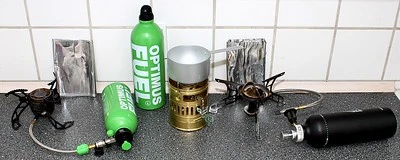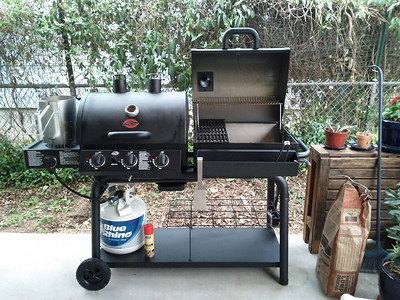
The length of time a 220g butane canister lasts depends on a number of variables, including the specific device you’re using it for, the setting of that device, ambient temperature, and so on. Here are a few general guidelines to consider:
Camping Stoves
Estimate on High Settings:
On high settings, a 220g butane canister typically lasts around 1 to 2 hours. The duration can depend on various factors, including the efficiency of the stove and the ambient temperature.
Estimate on Low Settings:
On low settings, you can expect the canister to last anywhere from 3 to 4 hours. Lowering the flame not only saves fuel but also is often sufficient for simmering food or keeping water hot.
Butane Lanterns
Estimate on Typical Usage:
For a butane lantern used in a medium setting, a 220g butane canister can last approximately 4 to 8 hours. The time may vary based on the model’s efficiency and if it has different light intensity settings.
Portable Heaters
Estimate on High Settings:
On high settings, a portable butane heater may use up a 220g canister in about 1 hour or less, depending on the heater’s BTU rating (British Thermal Units, a measure of heat output).
Estimate on Low Settings:
On low settings, the canister might last up to 2 or 3 hours. However, it’s crucial to remember that heaters tend to consume fuel more rapidly than other devices, so it’s good to have backup canisters if you plan to use a heater for an extended period.
Discuss Variables:
Environmental conditions like wind and cold temperatures can reduce efficiency, making the fuel run out more quickly.
The enclosed space (if applicable) size and insulation can also impact how long a heater needs to run to maintain a comfortable temperature, affecting the longevity of the fuel canister.
Note: These are approximate figures and your experience may vary based on many factors, including those previously discussed. Always consult your device’s manual for the most accurate information and adhere to safety guidelines.
To make your canister last longer, use the lowest effective setting for your needs and protect your device from wind when possible. Always adhere to safety guidelines when using butane canisters, particularly in enclosed spaces.
Read also: Is Mixing Butane with Other Fuels Safe?
Tips for Making a Butane Canister Last Longer
Lower Settings
Using your butane-powered device on its lowest effective setting can significantly extend the life of your canister. For instance, cooking on a lower heat setting on a camping stove often uses substantially less fuel over time compared to consistently cooking on high. This principle applies to other butane-powered devices like lanterns and heaters as well. Utilizing the lowest effective setting can:
- Save fuel and money.
- Extend the lifespan of your canister, reducing the number of canisters you need to carry for an outdoor trip or store for emergency preparedness.
- Allow for better cooking control, reducing the chance of burning food when using a stove.
Windshields
Wind can be a significant factor in reducing the efficiency of a butane stove. The wind carries heat away from the stove, causing it to work harder and, therefore, consume more fuel. Using a windshield can improve the stove’s efficiency by:
- Blocking the wind helps to maintain a consistent temperature around the cooking area.
- Allowing for quicker cooking times, and reducing the total amount of time the stove needs to be on.
- Increasing fuel efficiency, not only makes a single canister last longer but also reduces the overall number of canisters you’ll need for a trip.
Keep Warm
Cold temperatures can affect butane performance, causing it to vaporize less efficiently and thereby reducing the effectiveness and efficiency of your device. Here are some tips for storing butane canisters in colder climates:
- Store the canister in a warmer environment when not in use, like the inside of your tent or vehicle, but be cautious of storing it in extreme heat.
- Consider wrapping the canister in a thermal blanket or clothing to keep it insulated.
- Before use, warm the canister in your hands or pockets for a few minutes.
- Some outdoor enthusiasts opt to sleep with their canister in their sleeping bag to keep it warm overnight (though it’s essential to ensure the cap is securely fastened to prevent any leaks).
Remember, these are guidelines designed to help you make the most of your butane canisters. Always consult the manufacturer’s guidelines for specific details, and adhere to all safety recommendations to ensure you’re using butane canisters responsibly and effectively.
Read also: Butane Evaporation Temperature (How Long Does It Take)
Factors That Impact Gas Consumption
Understanding the factors that impact gas consumption is crucial for maximizing the lifespan of a 220g butane canister, especially for outdoor activities or emergency situations. Here are some key variables to consider:
Type of Device
Different devices like stoves, lanterns, and heaters consume gas at varying rates. Stoves are generally more fuel-efficient than heaters, which require a high BTU output to heat larger spaces.
Efficiency of Device
Newer or high-quality models are often more fuel-efficient than older or cheaper versions. The efficiency can be gauged by looking at the device’s BTU (British Thermal Unit) ratings and comparing it to the duration of use listed in the user manual.
Environmental Conditions
Wind, cold temperatures, and altitude can affect how efficiently a device uses gas. Wind can disperse heat, causing a stove to work harder, while cold temperatures can affect the vaporization rate of butane. High altitudes may also require higher fuel consumption to achieve the same heating or cooking results.
Usage Settings
Running a device on high settings will naturally consume more fuel than using it on low. Understanding the lowest effective setting for your needs can significantly extend the lifespan of your butane canister.
Quality of the Gas
Not all butane is created equal. Impurities and additives can affect how efficiently the gas burns, impacting your device’s overall fuel consumption.
Device Maintenance
A well-maintained device performs more efficiently. Regular cleaning and part replacement, when necessary, can help ensure that you get the most out of each canister.
By understanding these factors, you can make informed decisions that help you get the most out of your 220g butane canister, whether you’re cooking a meal outdoors or illuminating a space during a power outage. Always consult your device’s manual for the most accurate information and ensure you follow all safety guidelines for using and storing butane canisters.
To Make a Conclusion
Knowing how long a 220g butane canister lasts is crucial for activities like camping or emergency preparedness. The lifespan of a canister varies based on factors such as the device in use, its settings, and environmental conditions.
For example, you can expect around 1 to 2 hours of use on a camping stove set to high, and up to 8 hours on a medium-setting lantern. Taking steps like using lower settings, employing windshields, and storing canisters properly can extend their longevity.
Always consult your device’s manual for accurate information and adhere to safety guidelines for optimal and responsible use. In short, understanding your butane canister’s limitations helps you plan effectively and utilize your resources wisely.

Jeremy is a highly experienced professional propane technician with over 21 years of experience in the industry. Throughout his career, he has gained extensive knowledge and expertise in propane gas installation, maintenance, and repair, as well as in ensuring safety and compliance with industry standards. Mike has worked with various residential, commercial, and industrial clients, providing top-notch services and solutions to meet their propane needs. He is dedicated to his craft and passionate about delivering exceptional service to his clients.




